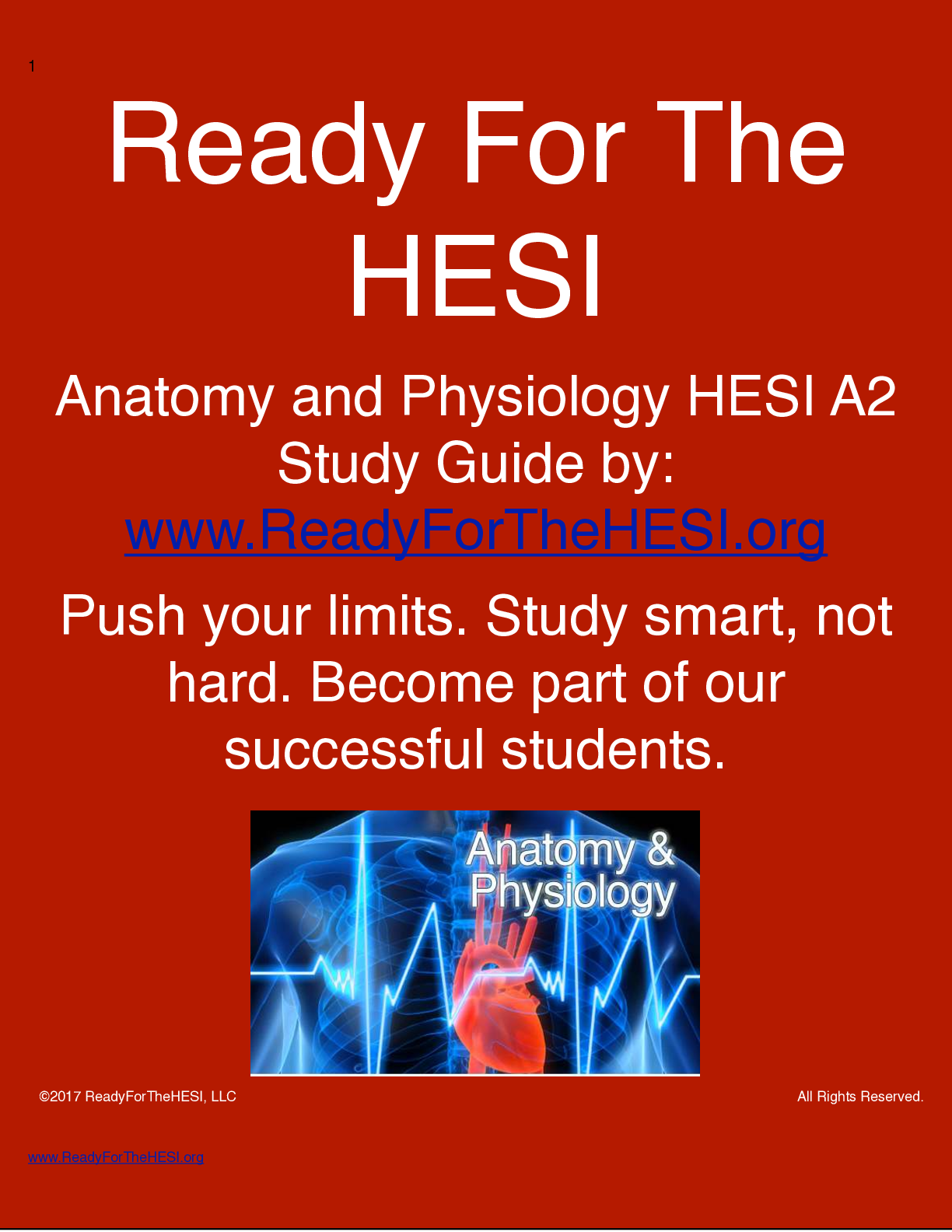*NURSING > QUESTIONS & ANSWERS > NSG 6420 MIDTERM EXAM GRADED A | VERIFIED ANSWERS (All)
NSG 6420 MIDTERM EXAM GRADED A | VERIFIED ANSWERS
Document Content and Description Below
NSG 6420 MIDTERM EXAM GRADED A Question 1 (2 points) The first step in the genomic assessment of a patient is obtaining information regarding: Question 1 options: a) Family history b) Environment al e... xposures c) Lifestyle and behaviors d) Current medications Save Question 2 (2 points) Rheumatic heart disease is a complication that can arise from which type of infection? Question 2 options: a) Epstein-Barr virus b) Diphtheria c) Group A beta hemolytic streptococcus d) Streptococcus pneumoniae Save Question 3 (2 points) A 64-year-old male presents with erythema of the sclera, tearing, and bilateral pruritus of the eyes. The symptoms occur intermittently throughout the year and he has associated clear nasal discharge. Which of the following is most likely because of the inflammation? Question 3 options: a) Bacterium b) Allergen c) Virus d) Fungi Save Question 4 (2 points) Dan G., a 65-year-old man, presents to your primary care office for the evaluation of chest pain and leftsided shoulder pain. Pain begins after strenuous activity, including walking. Pain is characterized as dull, aching; 8/10 during activity, otherwise 0/10. Began a few months ago, intermittent, aggravated by exercise, and relieved by rest. Has occasional nausea. Pain is retrosternal, radiating to left shoulder, definitely affects quality of life by limiting activity. Pain is worse today; did not go away after he stopped walking. BP 120/80. Pulse 72 and regular. Normal heart sounds, S1 and S2, no murmurs. Which of the following differential diagnoses would be most likely? Question 4 options: a) Musculoskeletal chest wall syndrome with radiation b) Esophageal motor disorder with radiation c) Acute cholecystitis with cholelithiasis d) Coronary artery disease with angina pectoris Save Question 5 (2 points) Which disease process typically causes episodic right upper quadrant pain, epigastric pain or chest pain that can last 4-6 hours or less, often radiates to the back (classically under the right shoulder blade) and is often accompanied by nausea or vomiting and often follows a heavy, fatty meal. Question 5 options: a) Acute pancreatitis b) Duodenal ulcer c) Biliary colic d) Cholecystitis Save Question 6 (2 points) Helicobacter pylori is implicated as a causative agent in the development of duodenal or gastric ulcers. What teaching should the nurse practitioner plan for a patient who has a positive Helicobacter pylori test? Question 6 options: a) It is highly contagious and a mask should be worn at home. b) Treatment regimen is multiple lifetime medications. c) Treatment regimen is multiple medications taken daily for a few weeks. d) Treatment regimen is complicated and is not indicated unless the patient is symptomatic. Save Question 7 (2 points) An obese middle-aged client presents with a month of nonproductive irritating cough without fever. He also reports occasional morning hoarseness. What should the differential include? Question 7 options: a) Atypical pneumonia b) Peptic ulcer disease c) Gastroesophageal reflux d) Mononucleosis (Epstein-Barr) Save Question 8 (2 points) Jenny is a 24 year old graduate student that presents to the clinic today with complaints of fever, midsternal chest pain and generalized fatigue for the past two days. She denies any cough or sputum production. She states that when she takes Ibuprofen and rest that the chest pain does seem to ease off. Upon examination the patient presents looking very ill. She is leaning forward and states that this is the most comfortable position for her. Temp is 102. BP= 100/70. Heart rate is 120/min and regular. Upon auscultation a friction rub is audible. Her lung sounds are clear. With these presenting symptoms your initial diagnosis would be: Question 8 options: a) Mitral Valve Prolapse b) Referred Pain from Cholecystitis c) Pericarditis d) Pulmonary Embolus Save Question 9 (2 points) The pathophysiological hallmark of ACD is: Question 9 options: a) Depleted iron stores b) Impaired ability to use iron stores c) Chronic uncorrectable bleeding d) Reduced intestinal absorption of iron Save Question 10 (2 points) A key symptom of ischemic heart disease is chest pain. However, angina equivalents may include exertional dyspnea. Angina equivalents are important because: Question 10 options: a) Women with ischemic heart disease many times do not present with chest pain b) Some patients may have no symptoms or atypical symptoms; diagnosis may only be made at the time of an actual myocardial infarction c) Elderly patients have the most severe symptoms d) A & B only [Show More]
Last updated: 1 year ago
Preview 1 out of 43 pages
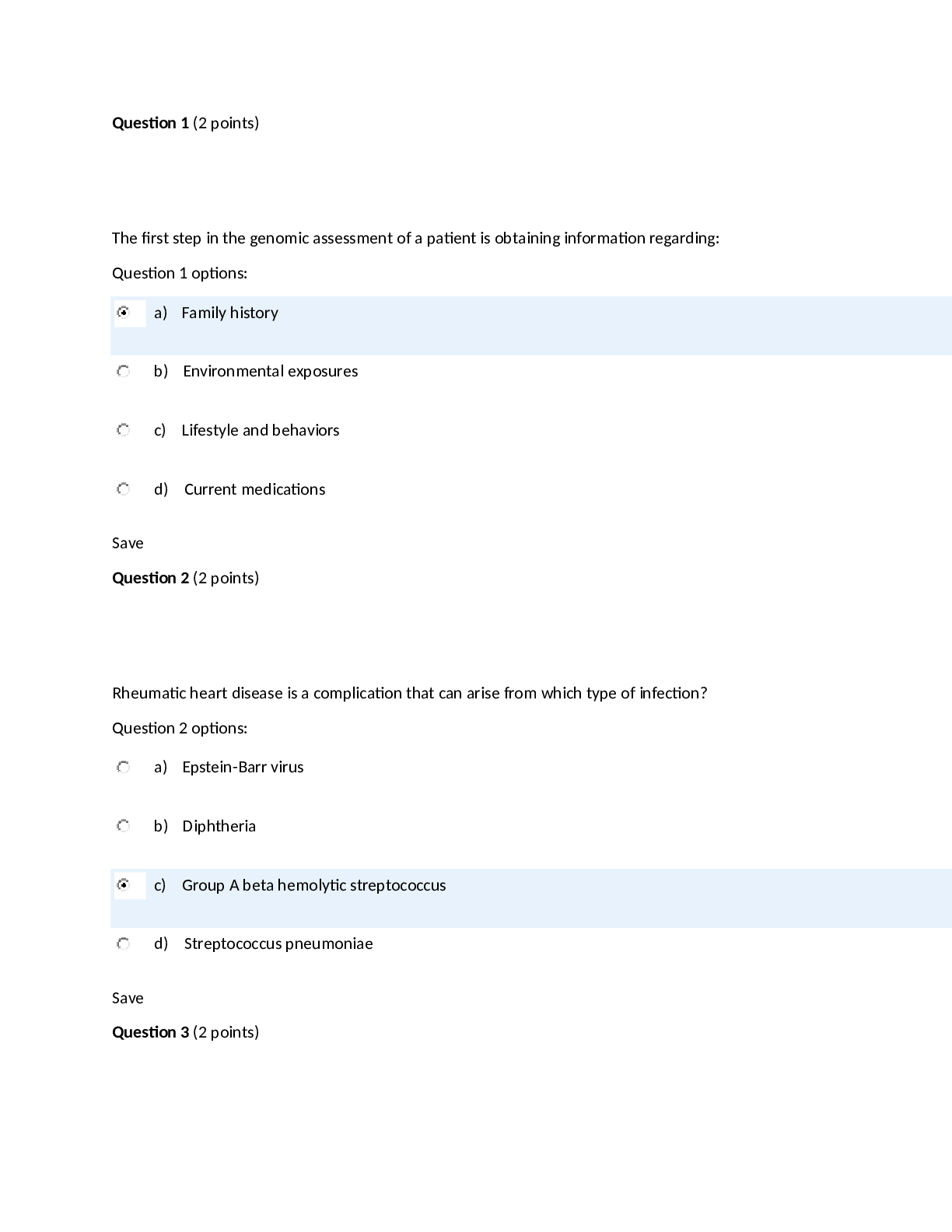
Buy this document to get the full access instantly
Instant Download Access after purchase
Add to cartInstant download
We Accept:

Reviews( 0 )
$12.00
Document information
Connected school, study & course
About the document
Uploaded On
Feb 20, 2021
Number of pages
43
Written in
Additional information
This document has been written for:
Uploaded
Feb 20, 2021
Downloads
0
Views
48


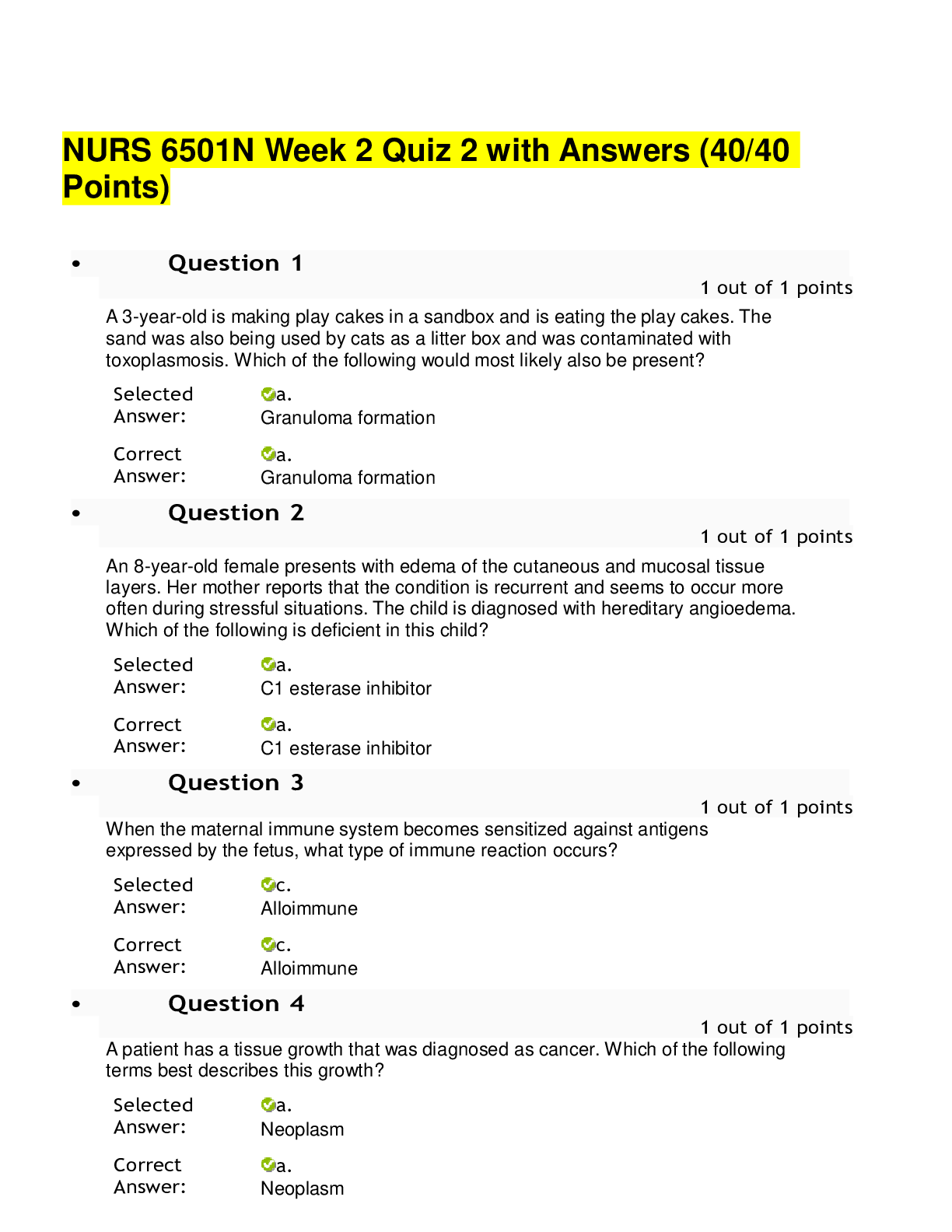

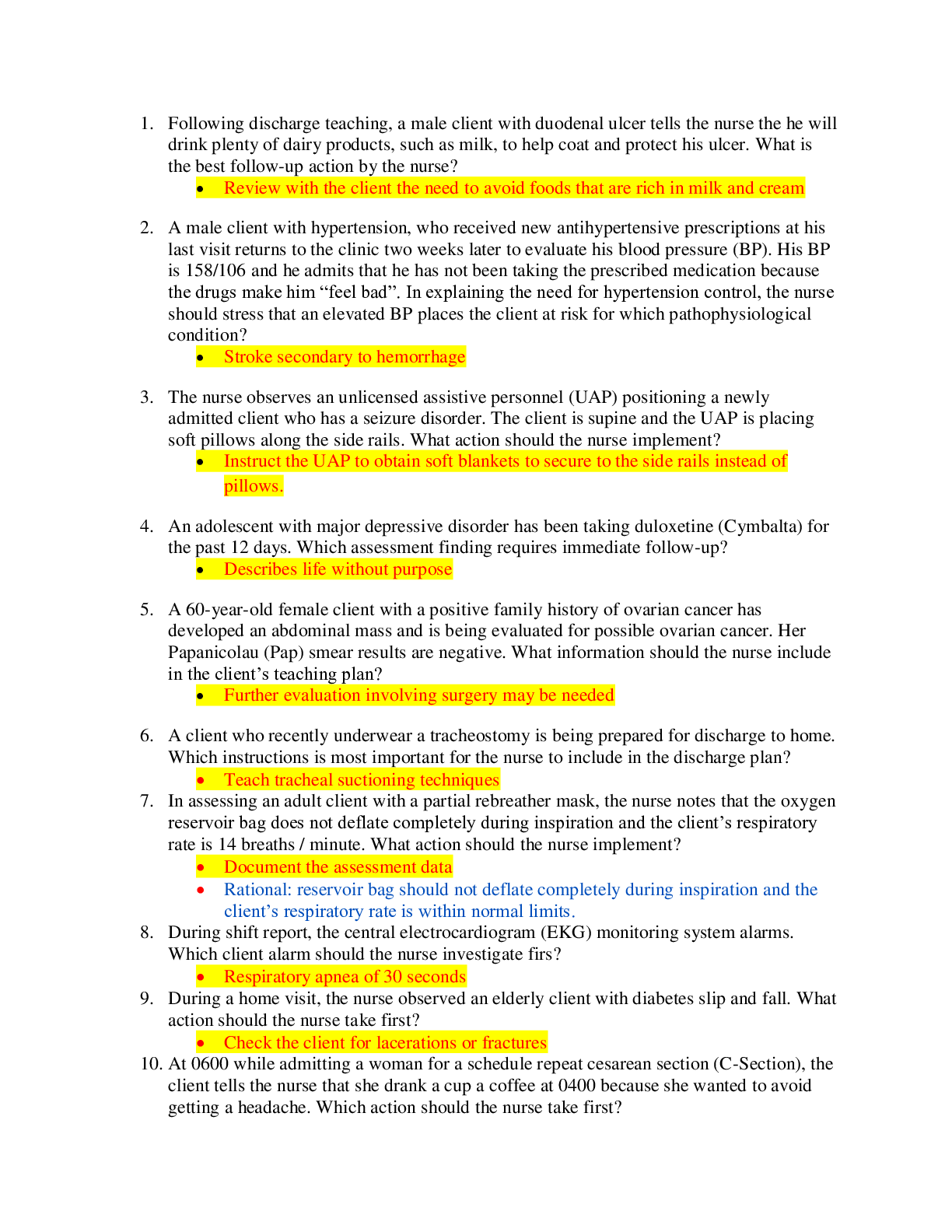
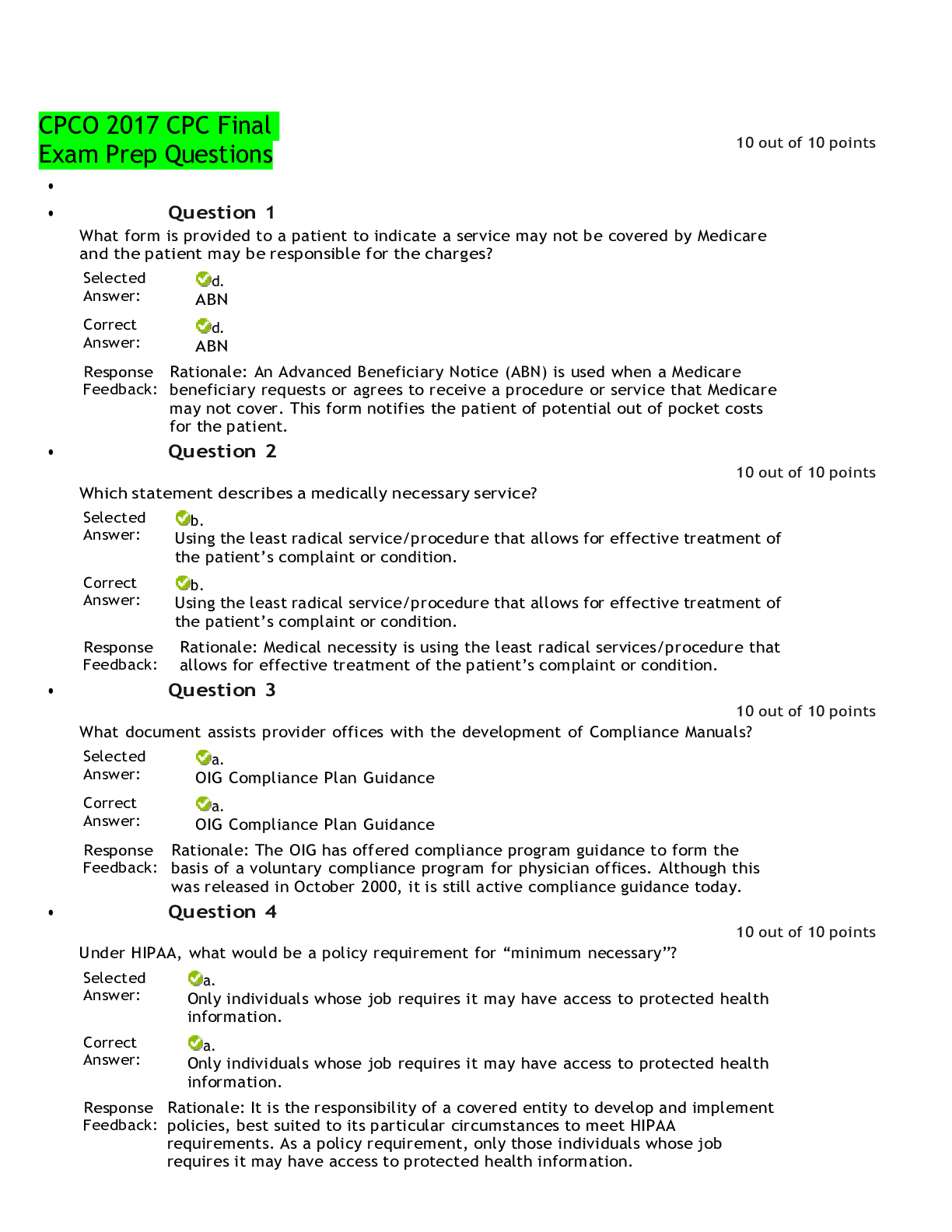
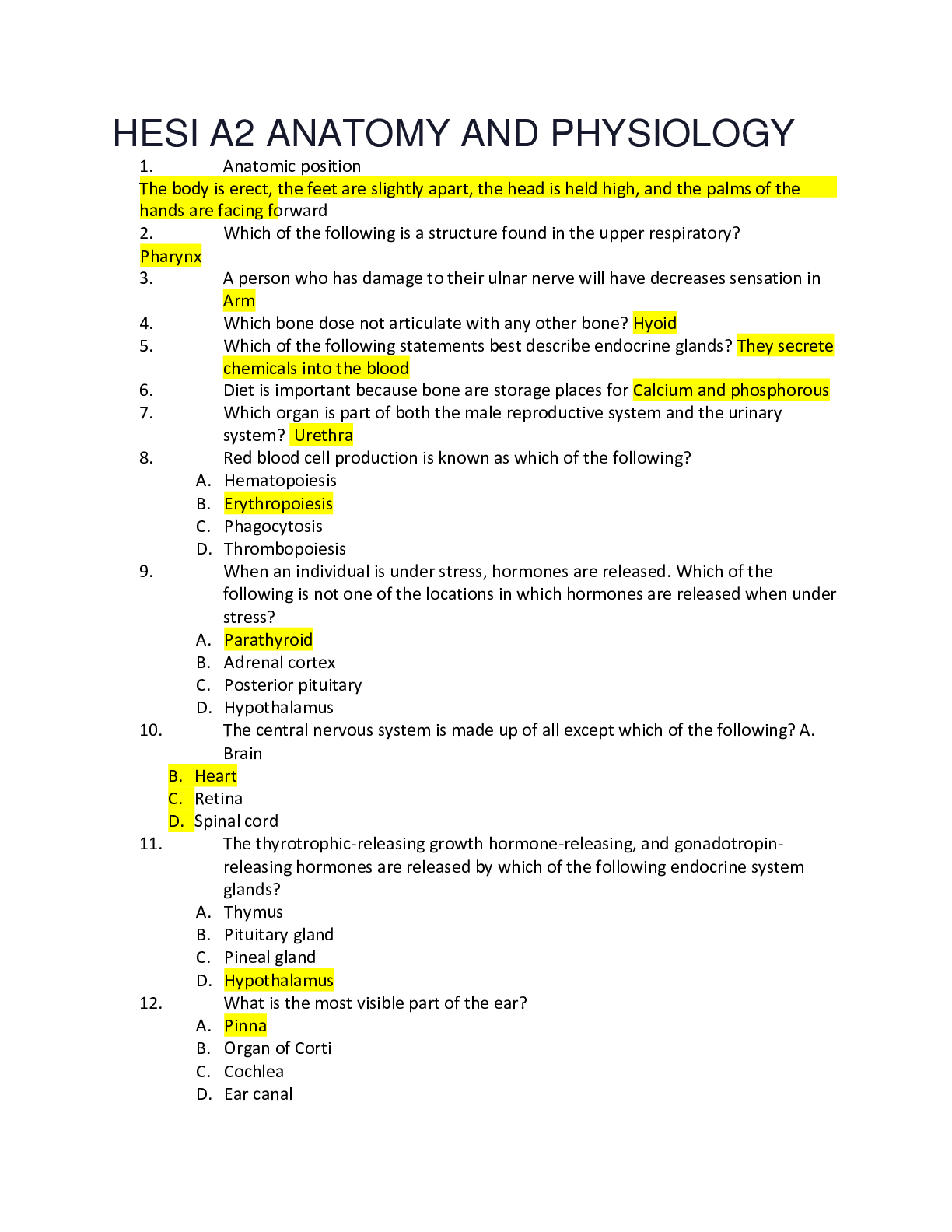
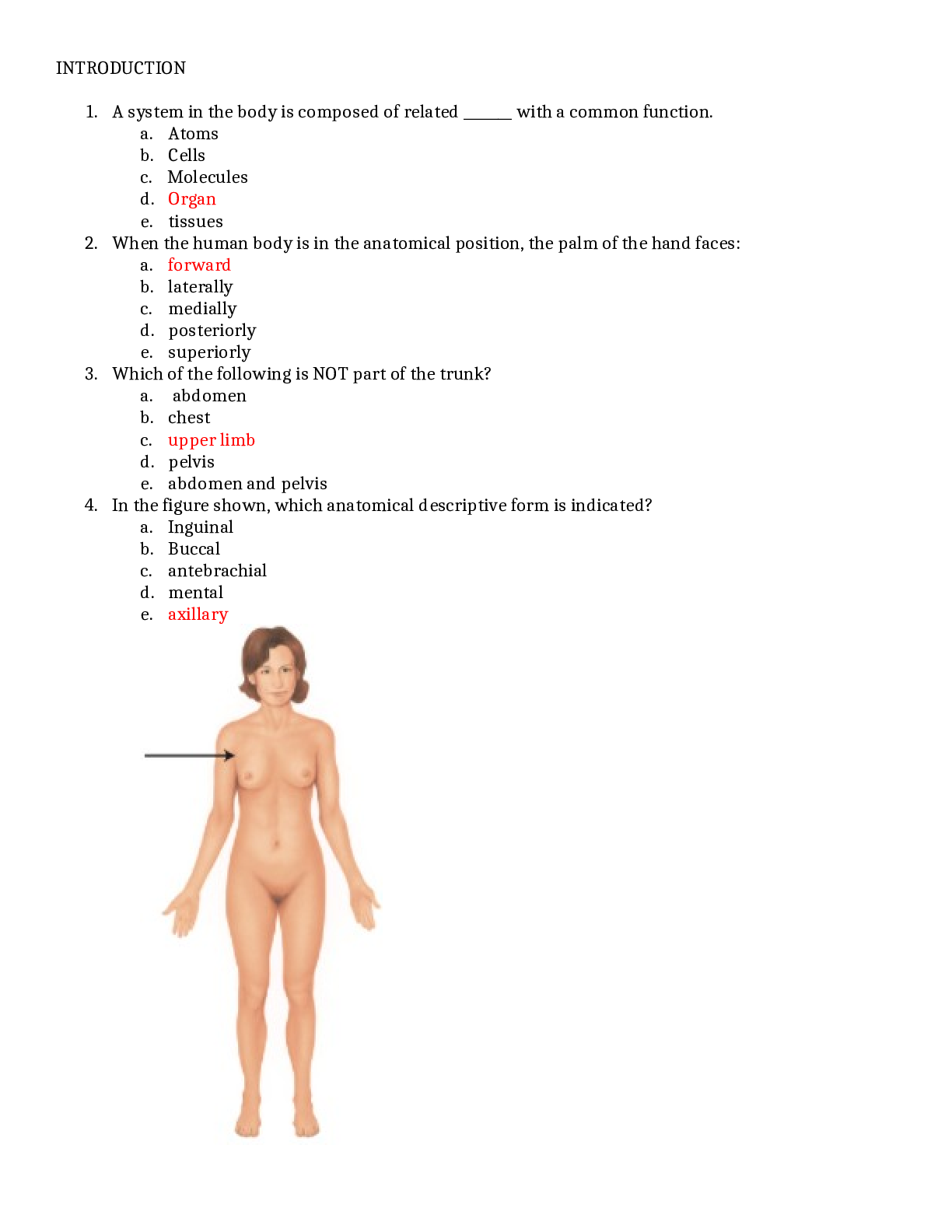

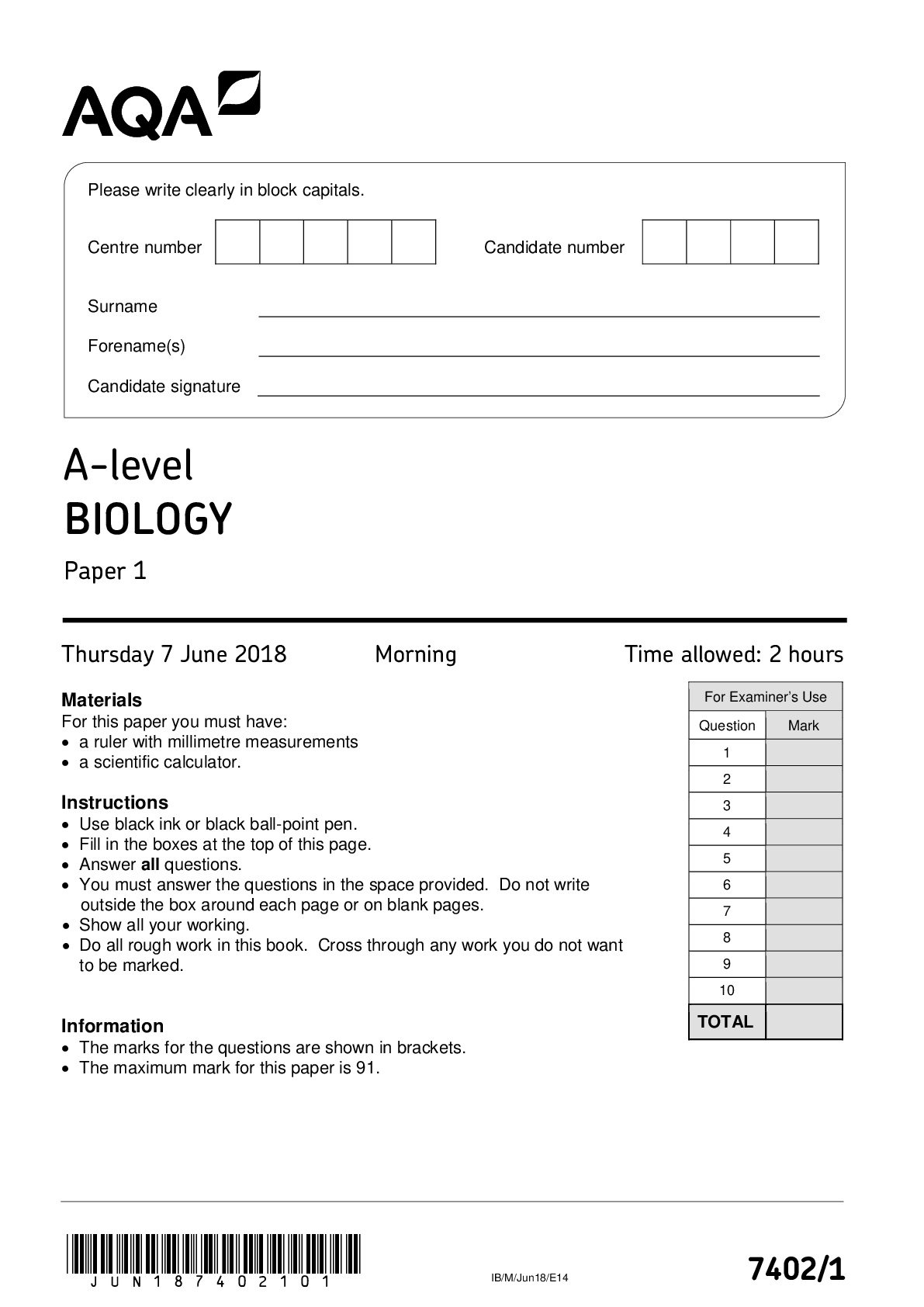
.png)
